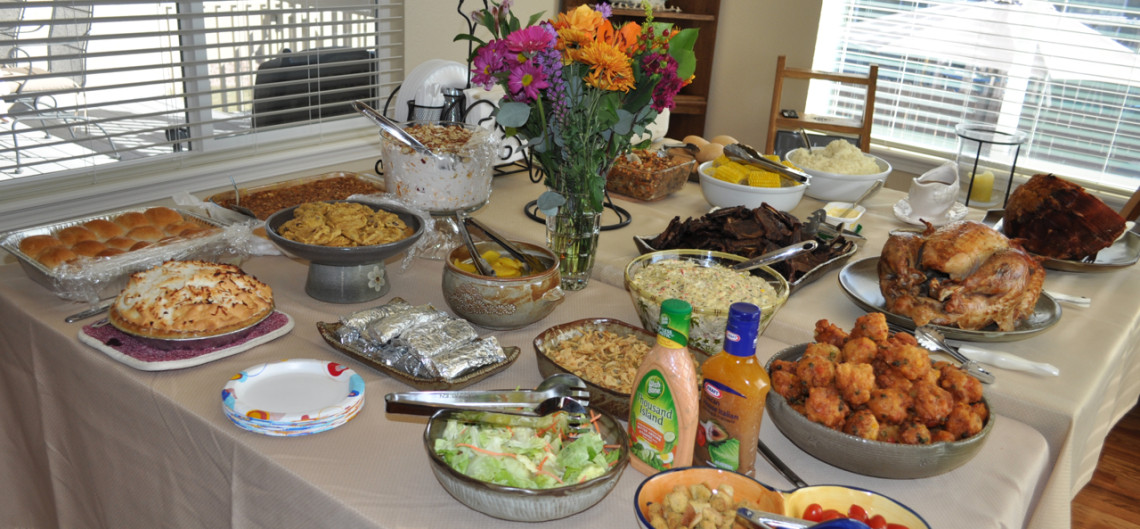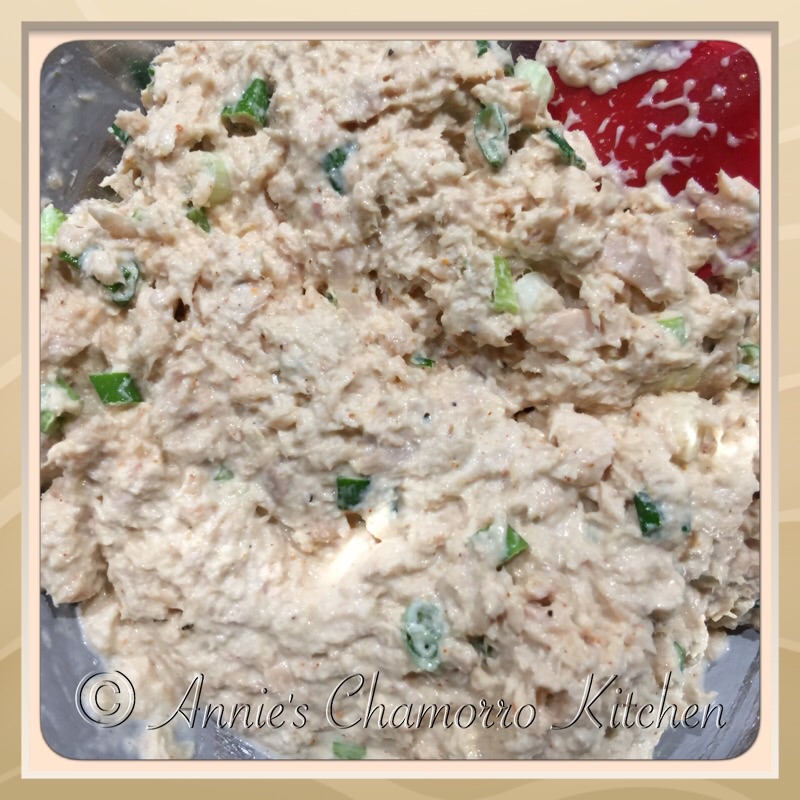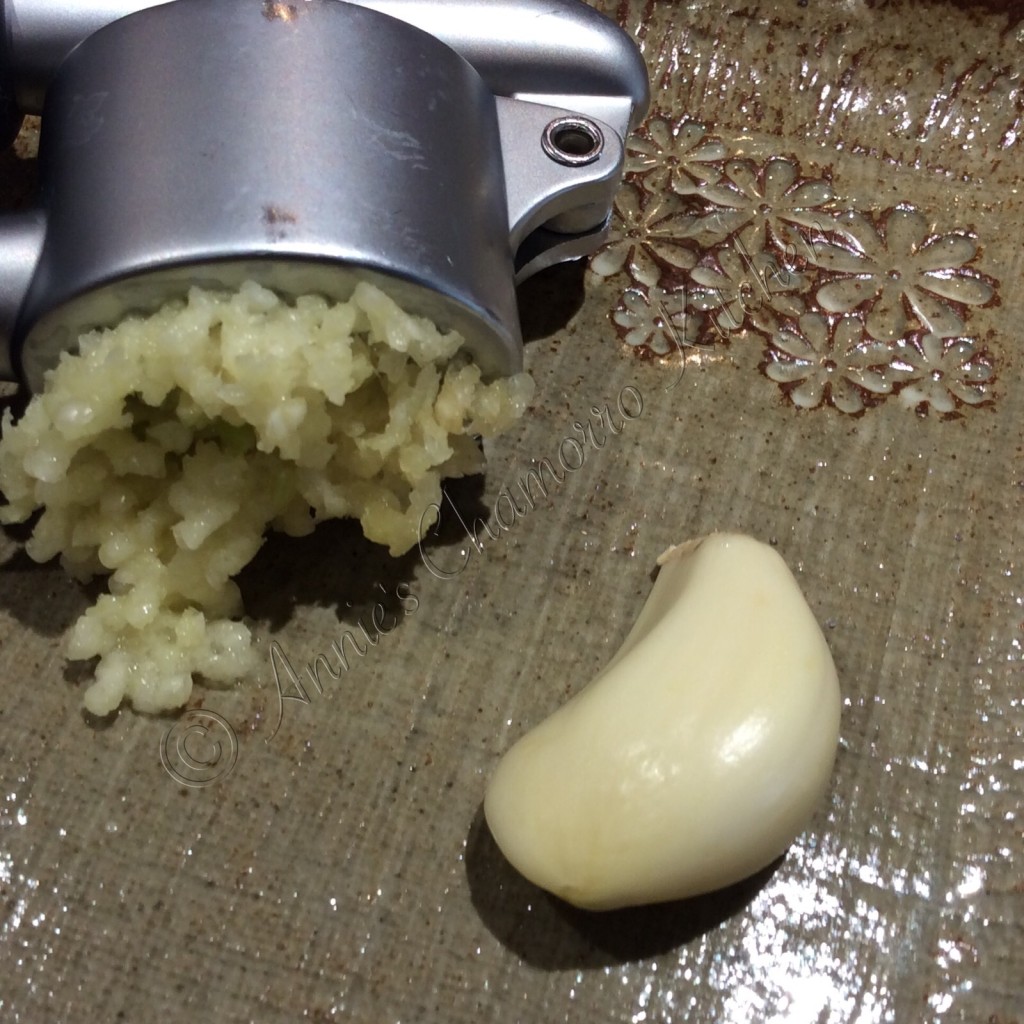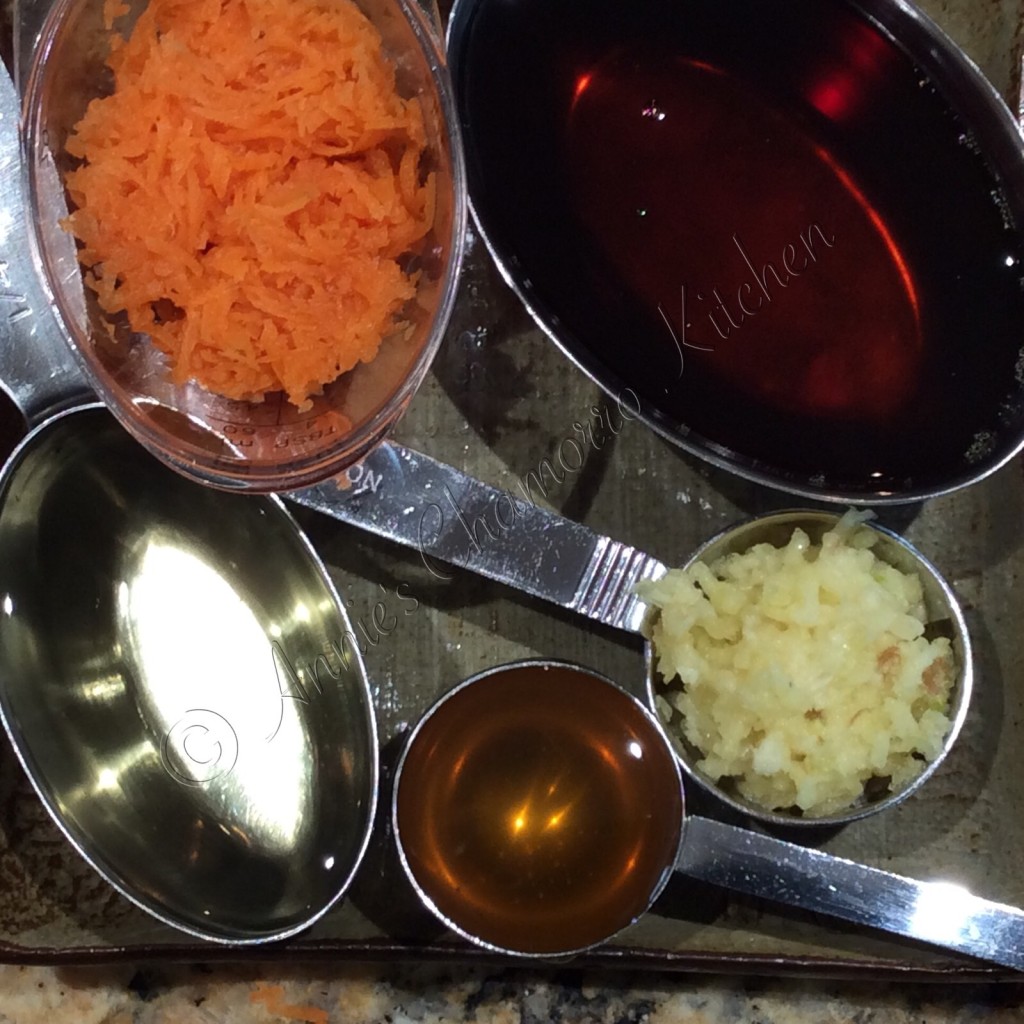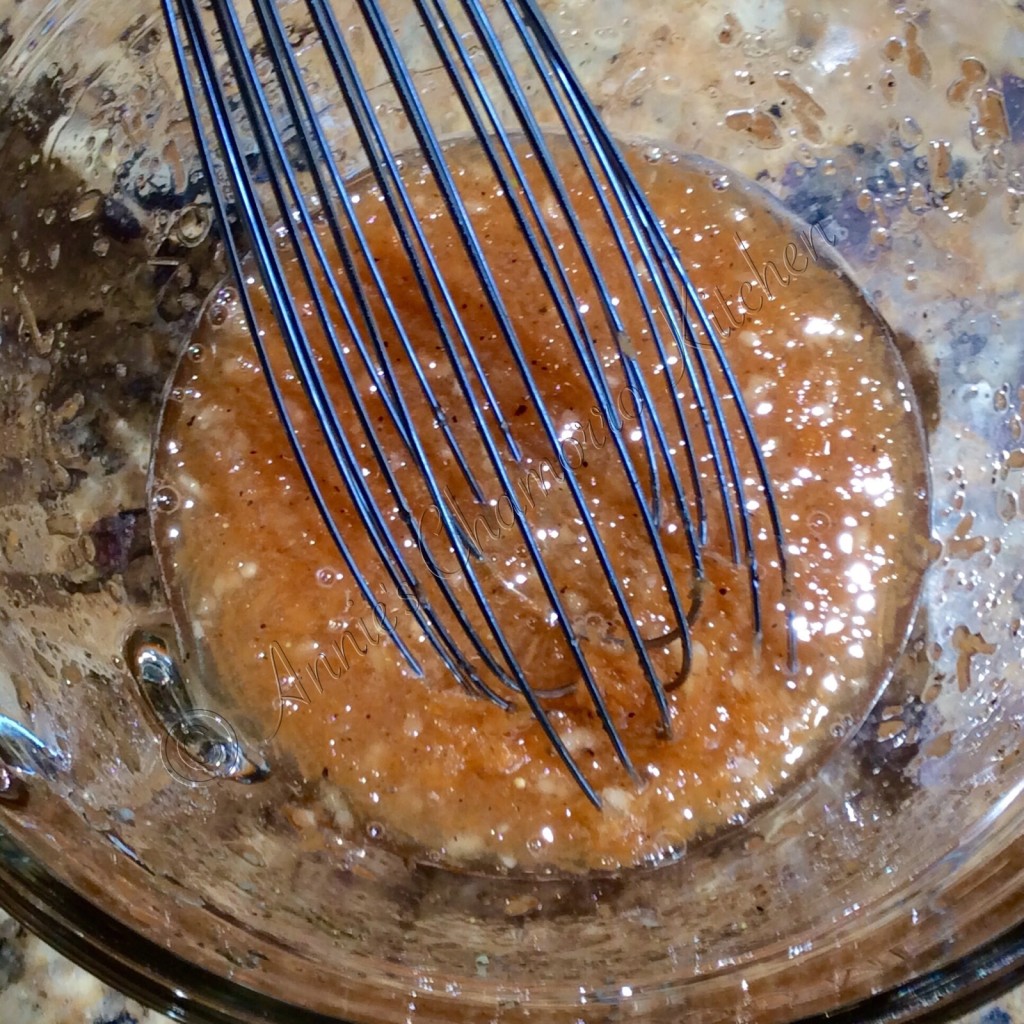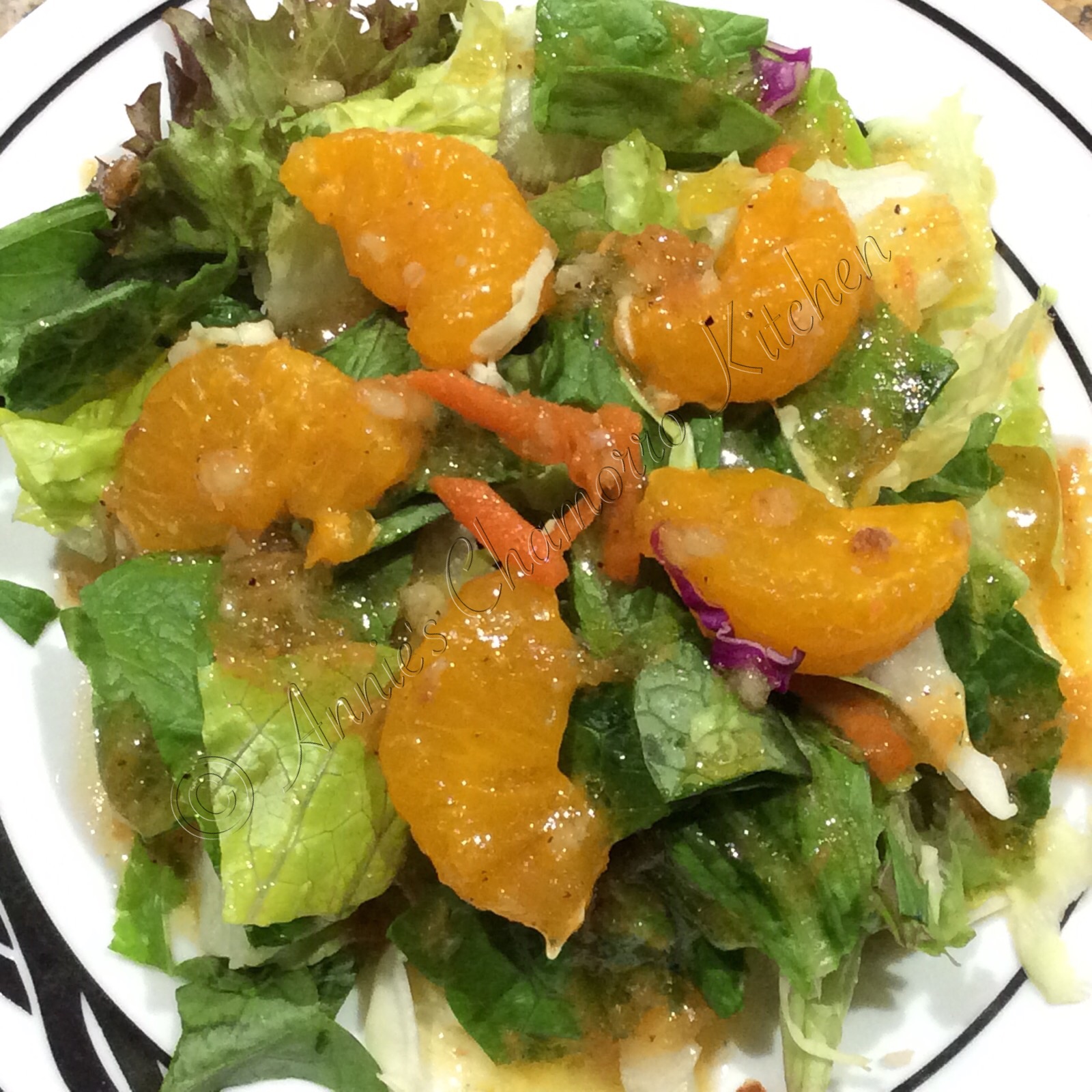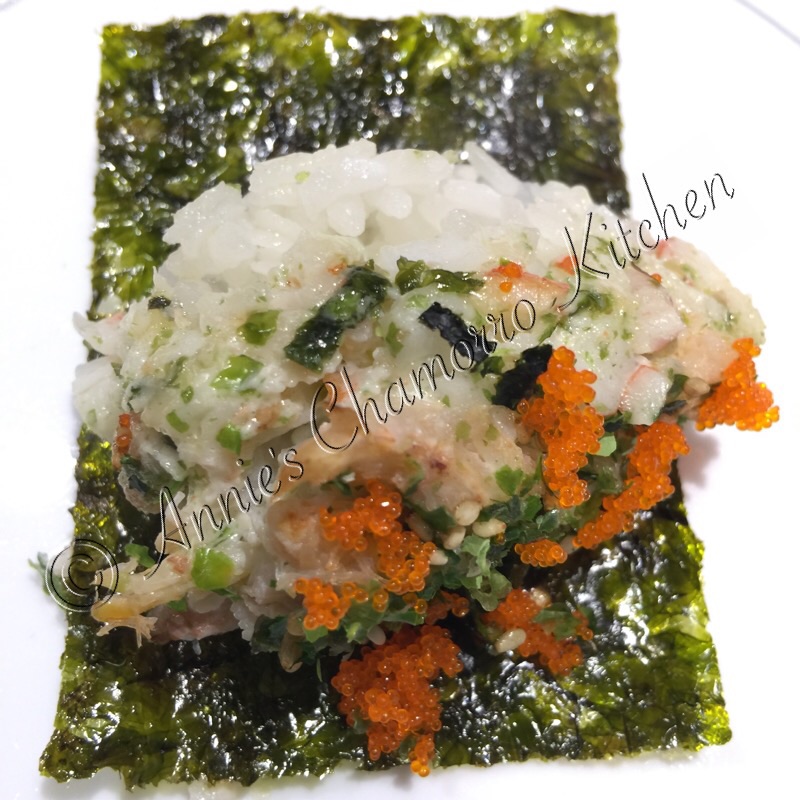
My family loves, LOVES, LOVES sushi. We love both the sushi with cooked ingredients (especially those with tempura shrimp — YUM!) as well as the ones with raw fish (spicy tuna is a fave).
We especially love the sushi that is either baked or fried and is served piping hot with the saucy filling practically oozing out of the wrapper. OMG — I’m drooling as I type this.
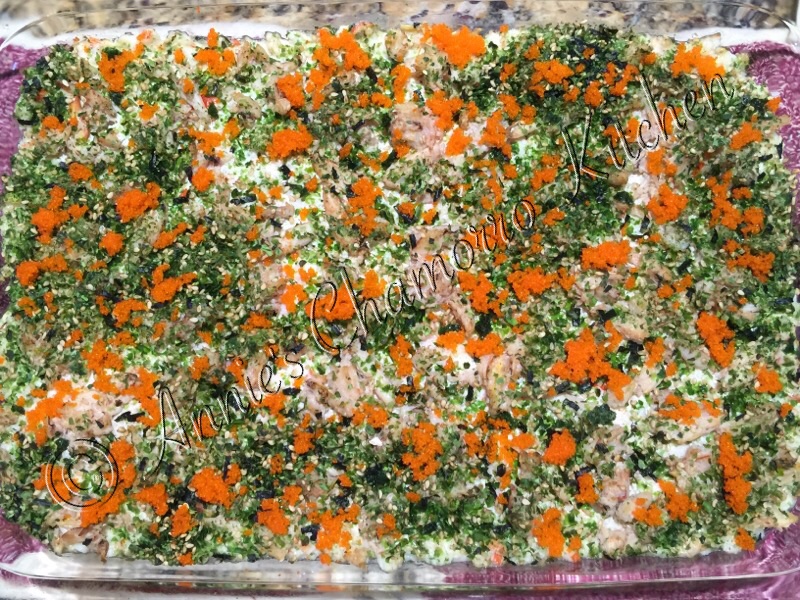
Rather than make one sushi roll then bake sliced pieces, this recipe is made casserole style in a 9×13 baking dish. Serve the baked casserole with sushi wrappers and you have a quick and easy — not to mention inexpensive (or at least not as expensive as buying sushi at a restaurant) — and delicious dish. This is also great for potlucks too.
While you can use the large sushi wrappers with this dish, my family prefers serving it with the “snack sized” seasoned seaweed wrappers (pictured below). You can find the smaller wrappers in the Asian aisle of most grocery stores.
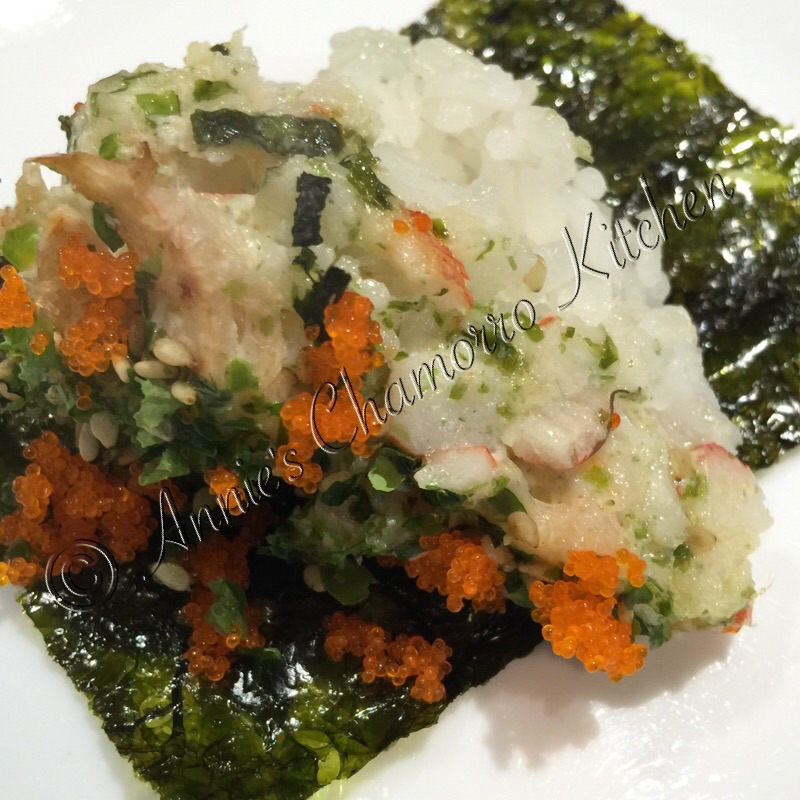
Very little preparation is needed to make this yummy casserole. Step-by-step instructions and photos follow. See my complete recipe at the bottom of this post.
First, chop up some imitation crab meat.
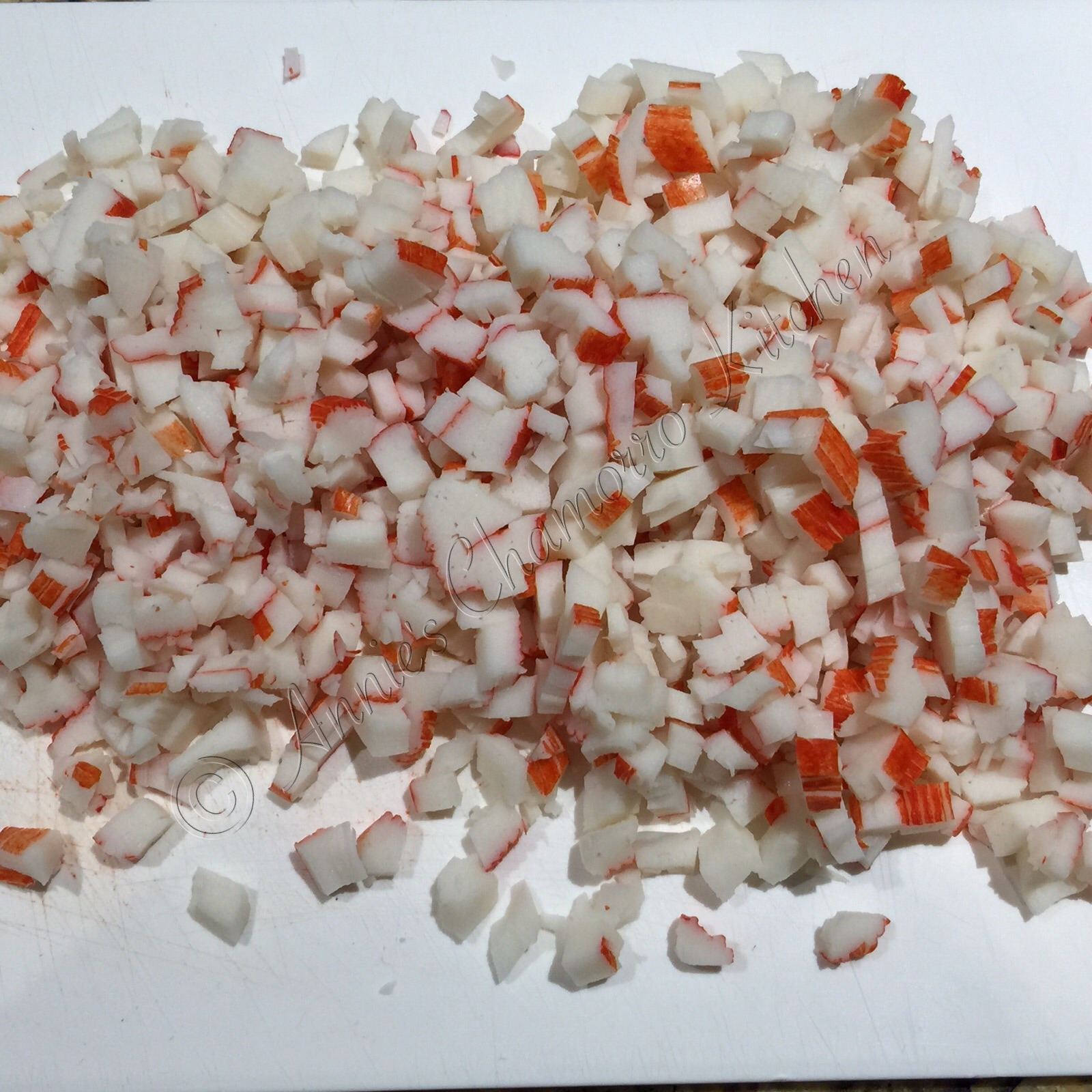
Pre-cooked salad shrimp also cuts on the preparation time. I prefer to chop these up as well, but you can certainly use them whole since they are rather tiny.
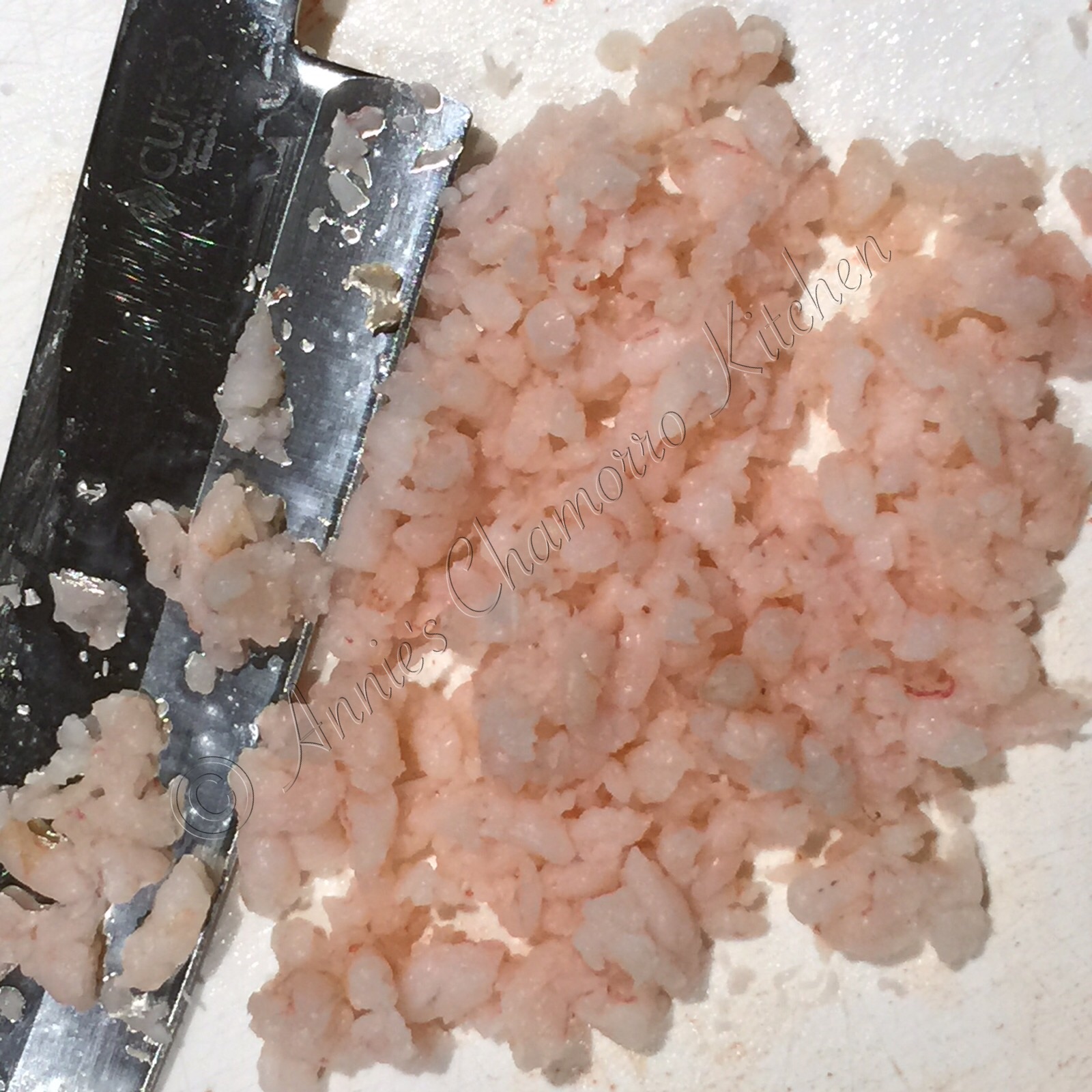
Place the chopped imitation crab and shrimp into a large mixing bowl.
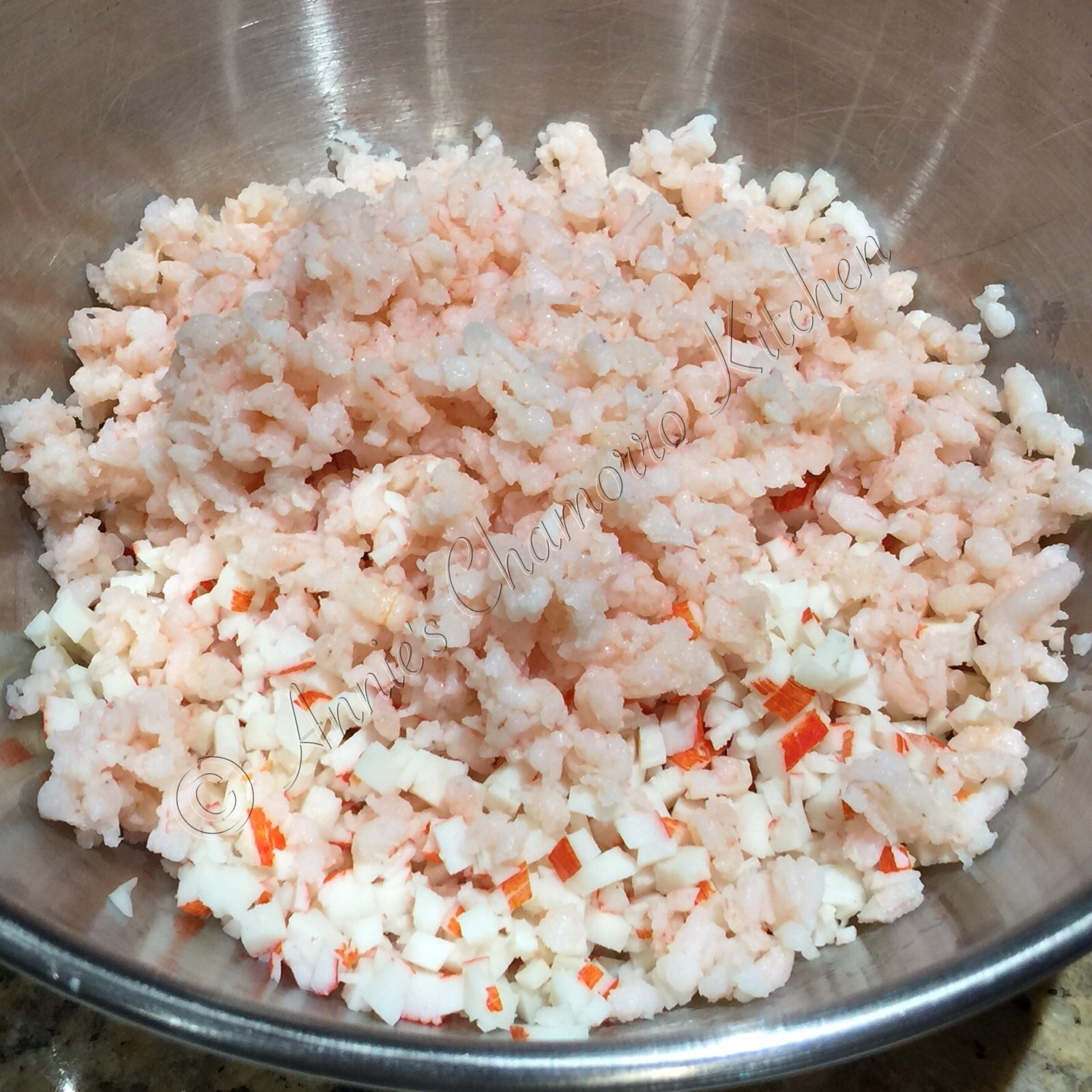
Add sour cream, mayo, and furikake to the bowl.

Furikake is a seasoning consisting of chopped seaweed, sesame seeds, sugar, and a few other spices. It comes in different flavors; I use the “regular” furikake pictured below. You can find this in the Asian aisle of your grocery store as well.
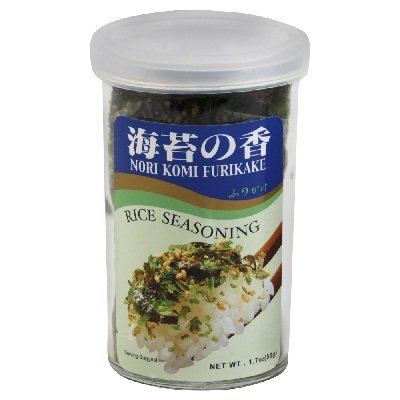
Stir to combine the ingredients for the shrimp and imitation crab mixture. This is good just as it is, but sometimes I mix in a little squeeze of Sriracha sauce, or if you have it, some Kimchee Base as well to kick it up a notch.
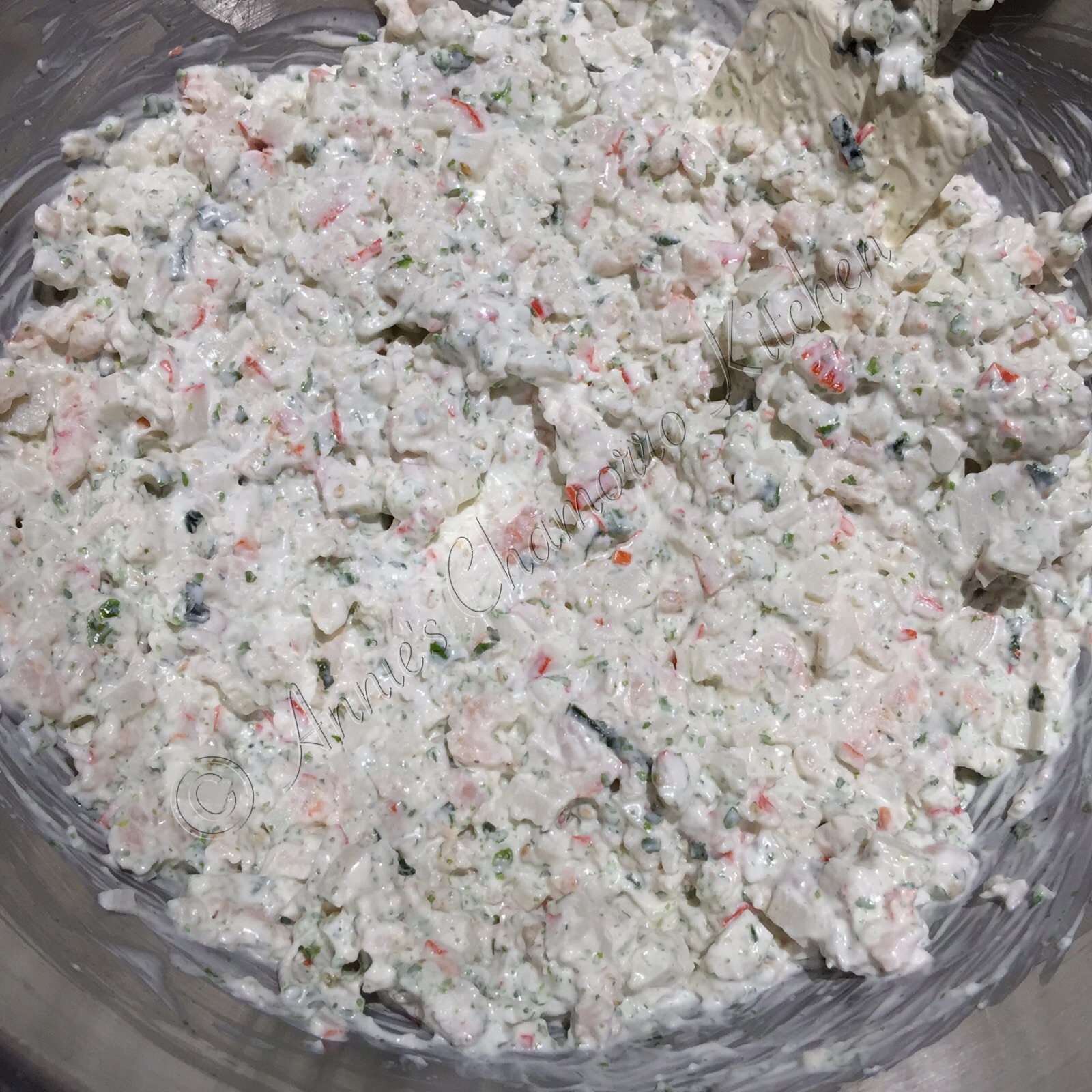
I love a lot of “meat” in this dish, so into the bowl goes real lump crab meat. Sometimes the can of crab meat has a few crab shells in it, so if you see any, be sure to pick them out and discard them.
Fold the crab meat into the shrimp and imitation crab mixture.
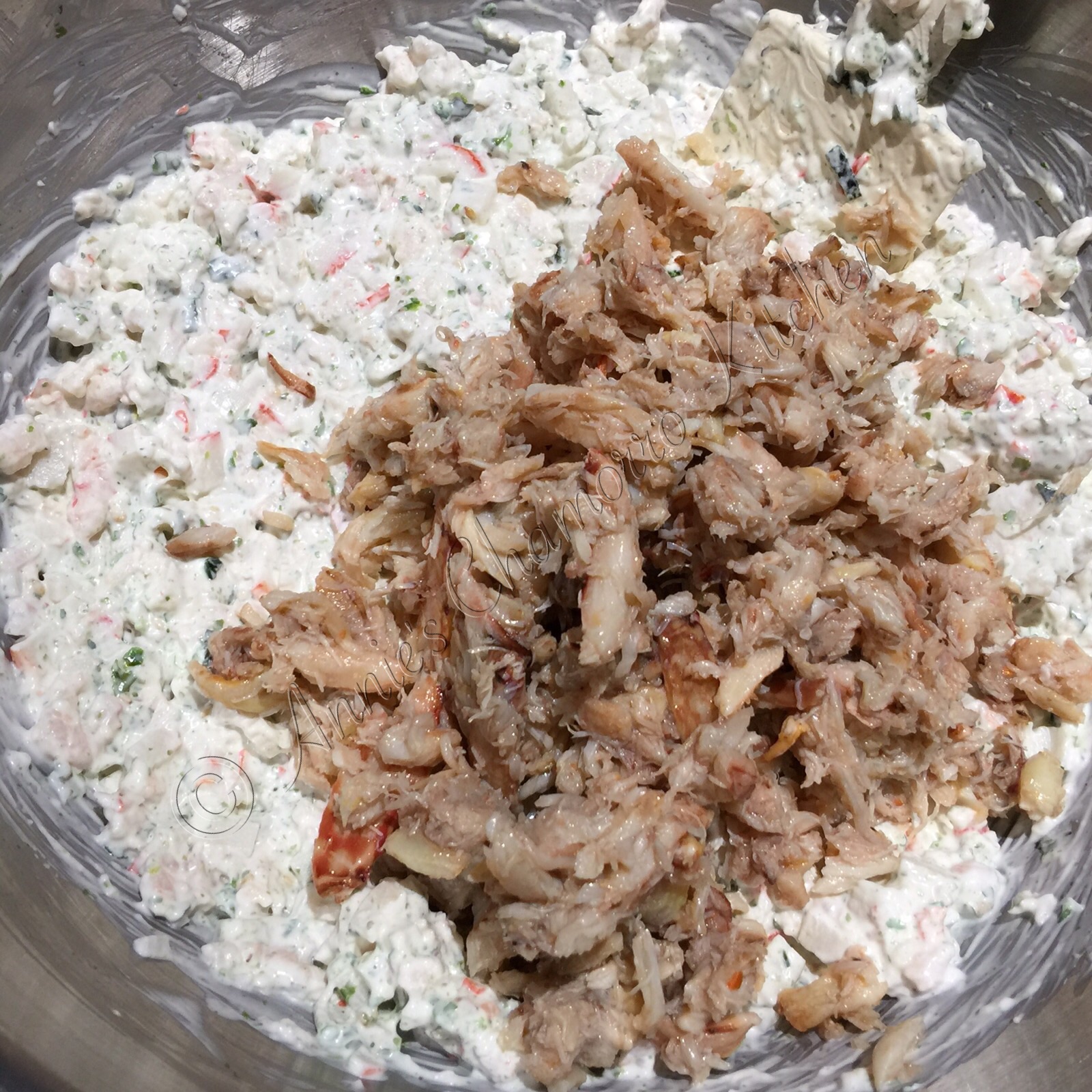
As I mentioned above, I love a lot of filling in this dish. I don’t like using too much rice as I think it detracts from the deliciousness of the filling.
I cooked just two cups of rice for this recipe then spread it in the bottom of a 9×13 pan. The rice layer is pretty thin — just how my family likes it. If you like having more rice, by all means, cook more, and create a thicker layer.
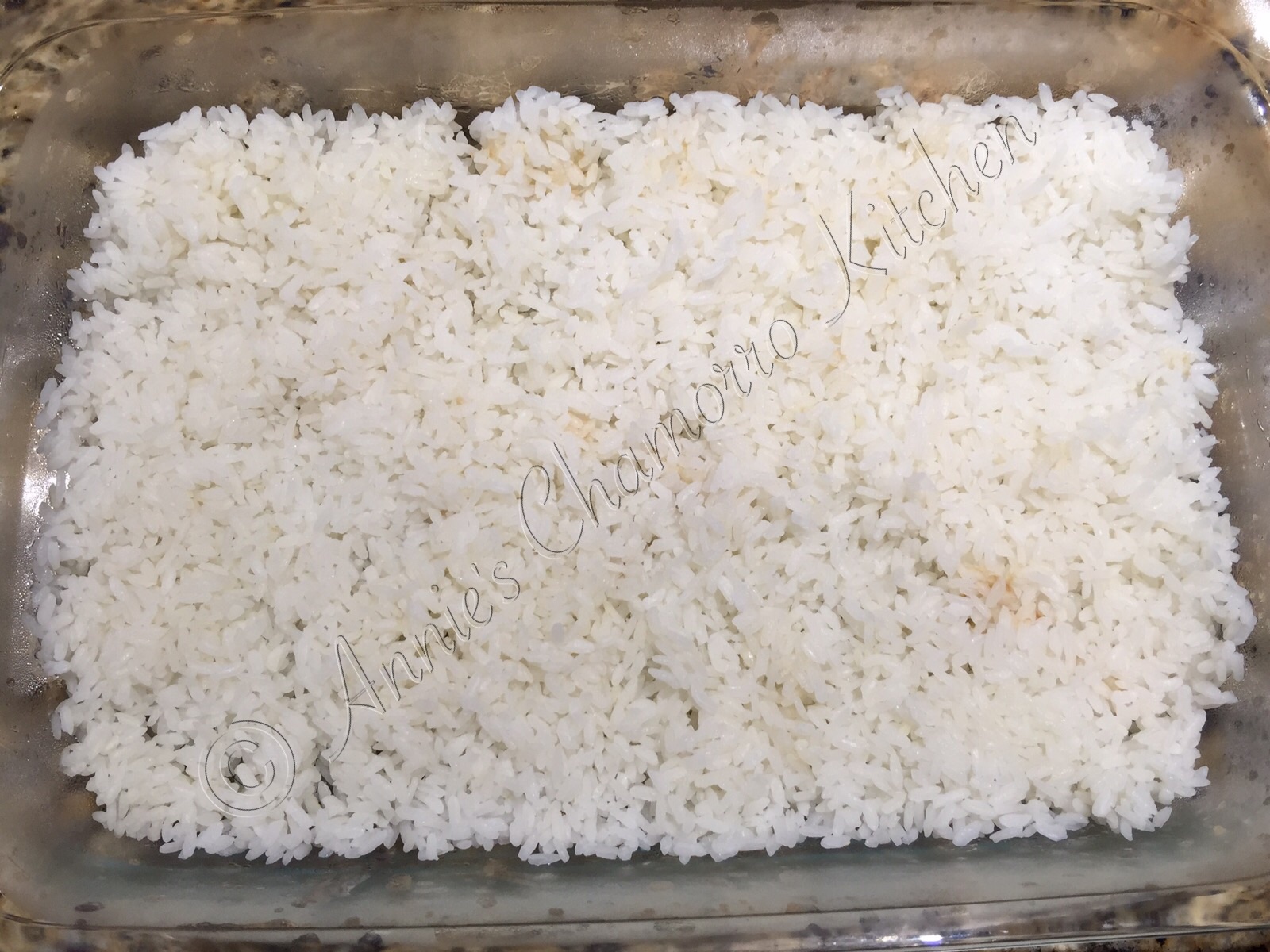
The entire bowl of the shrimp and crab mixture gets spread on top of the rice. It may seem like too much, but trust me, it’s the PERFECT amount.
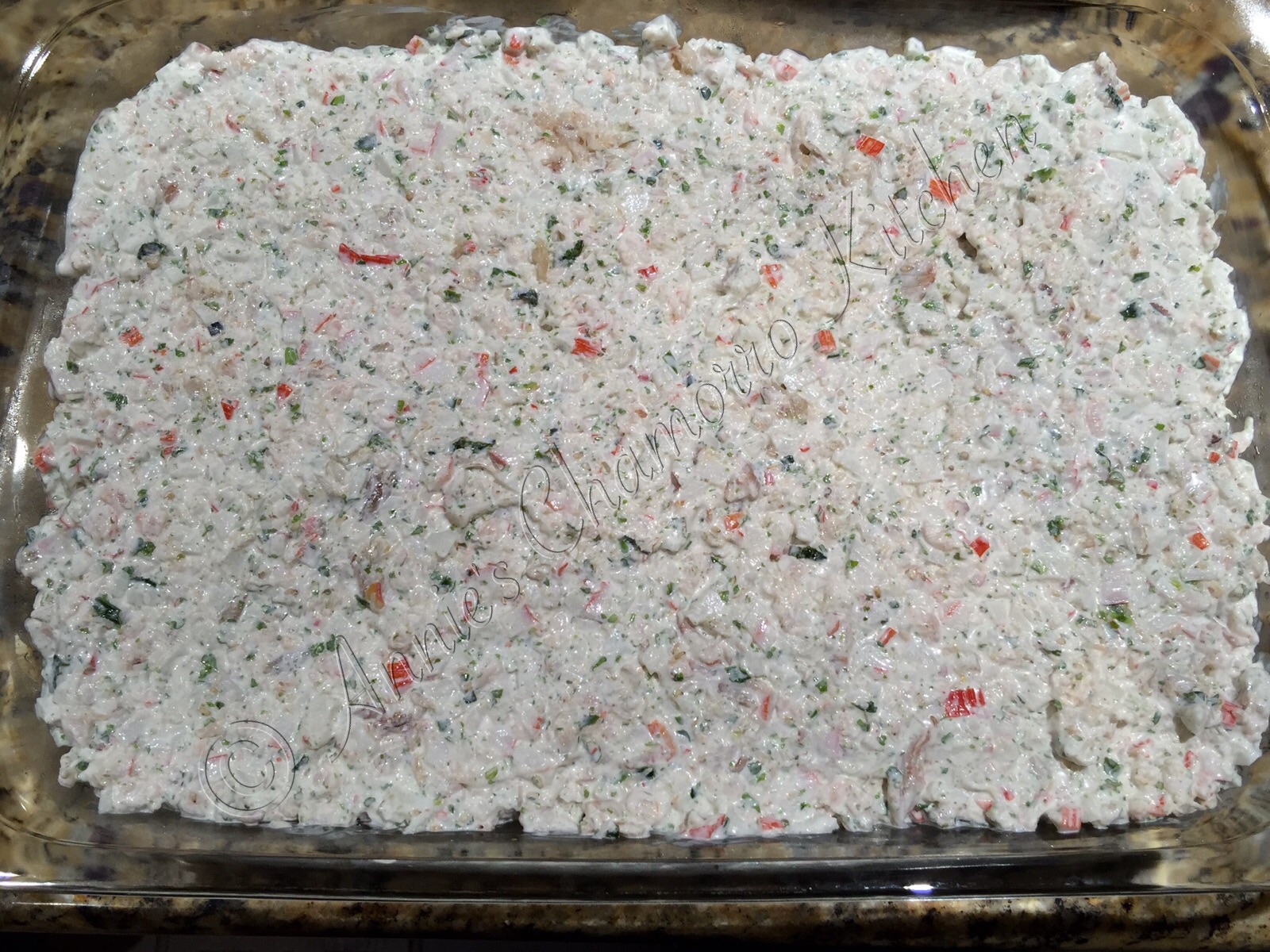
Add more real crab meat to the top of the shrimp and crab mixture. Hey, I did say I loved a lot of “meat” in this dish. 😉
If you prefer, you can add more salad shrimp instead of crab meat, or splurge and use both! 😀
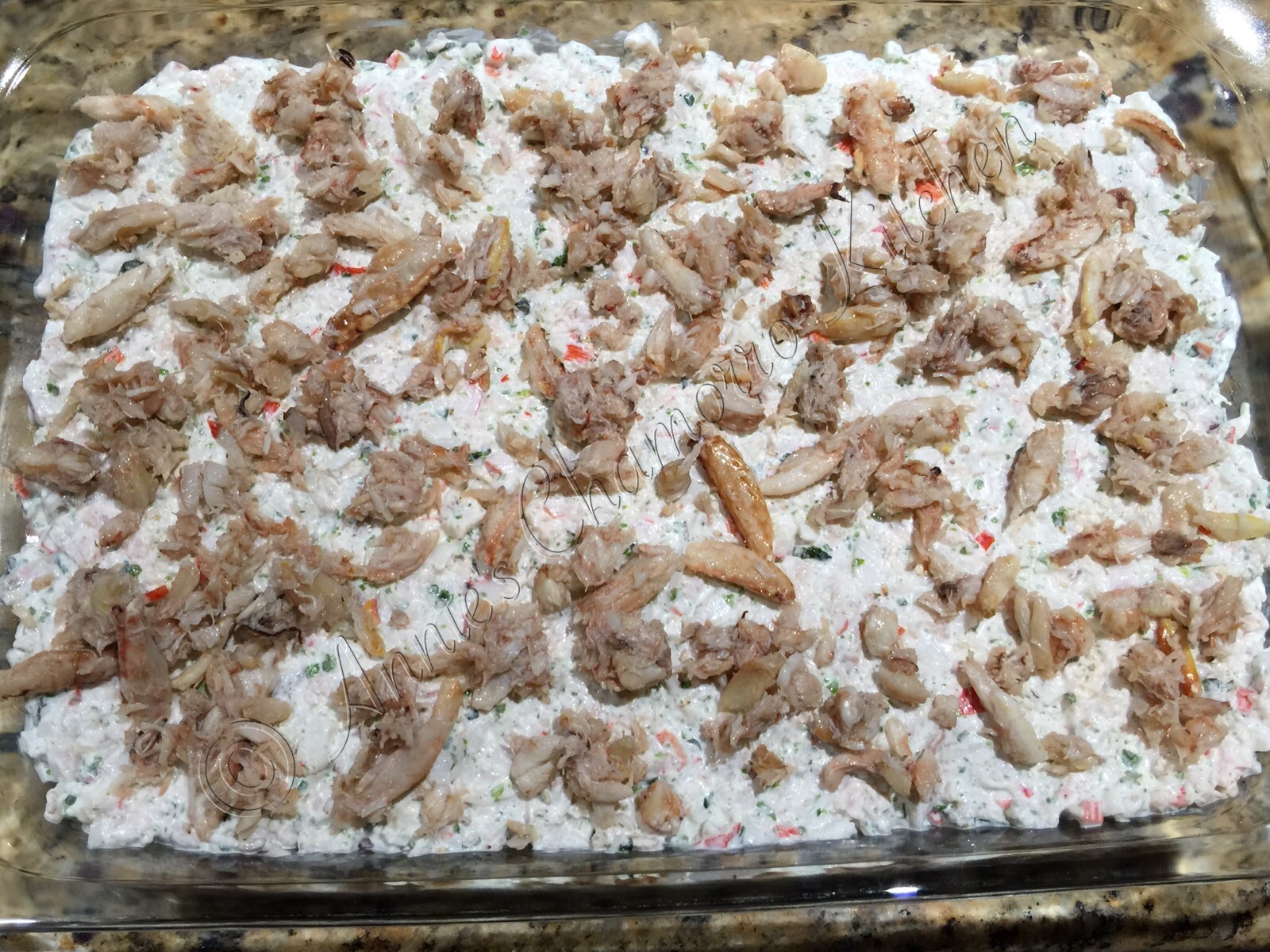
More furikake goes on top of everything. Because I didn’t season the rice or shrimp-crab mixture, the seasoned furikake is where most of the flavor and seasoning comes from. Do not skimp on this or your casserole will taste quite bland.
Bake for 20 minutes in a 375-degree oven.
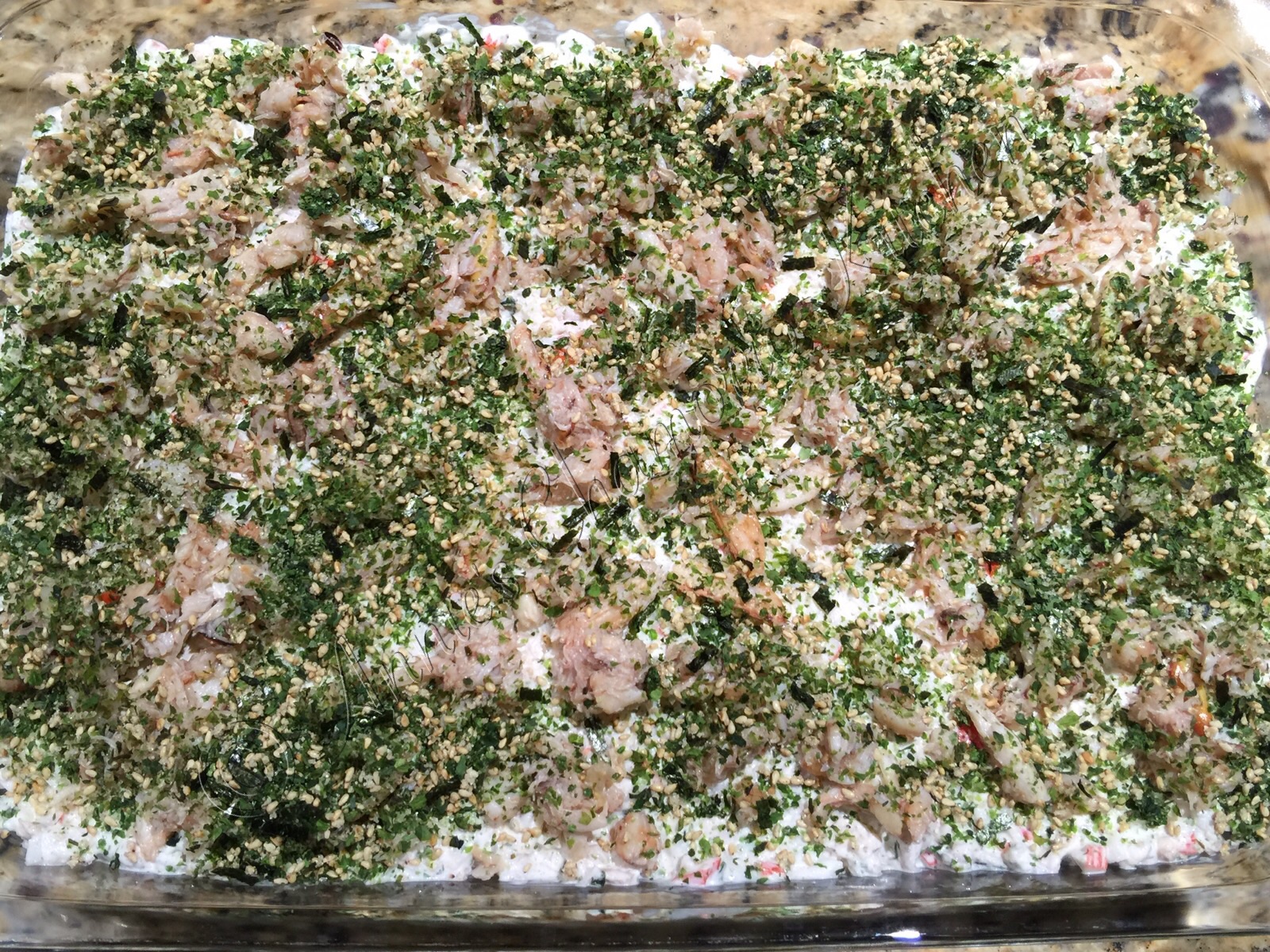
After baking, add as much or as little roe as you like. We use capelin roe, or masago. One of my children LOVES extra roe on hers. She loves it so much that her serving looks completely orange with all the roe she adds.

This is the brand of Capelin roe or Masago that I buy. It’s sold frozen in our local Asian supermarket.
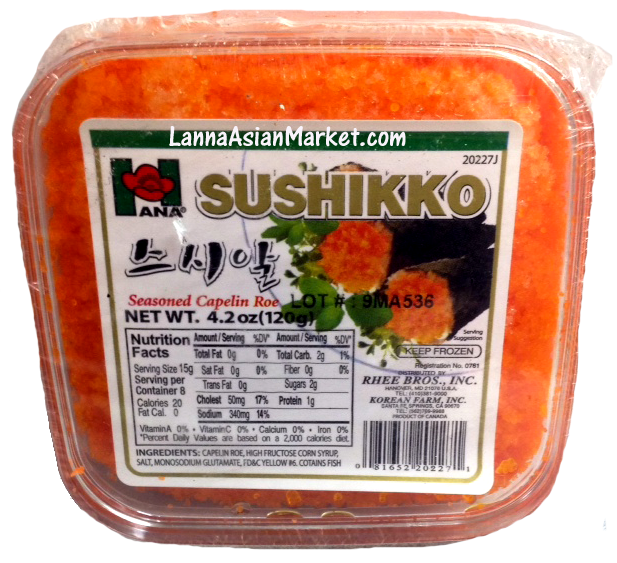
Serve the piping hot casserole with seasoned seaweed and ENJOY!

Baked Sushi Casserole
Author: Annie @ Annie's Chamorro Kitchen
- 12 oz imitation crab meat, finely chopped
- 12 oz cooked salad shrimp, chopped
- 1 cup mayo
- 1 cup sour cream
- ¼ cup furikake
- 1 cup real lump crab meat (I use lump claw meat)
- 2 cups medium grain rice, cooked
- ½ cup real crab meat (I use lump claw meat)
- ¼ cup furikake
- ¼ cup seasoned capelin roe
- Packages of seasoned seaweed wrappers, for serving with the casserole
- Place the chopped imitation crab meat and chopped shrimp into a large mixing bowl. Add the mayo, sour cream, and furikake to the bowl. Stir the ingredients together.
- Fold the lump crab meat into the shrimp mixture. Set aside.
- Spread the cooked rice in the bottom of a 9x13 pan.
- Spread the crab and shrimp mixture on top of the rice.
- Spread the remaining lump crab meat on top of the crab-shrimp mixture.
- Sprinkle more furikake on top of the lump crab meat.
- Bake the casserole for 20 minutes in a 375 degree oven.
- Top with roe.
- Serve with seasoned seaweed wrappers.
3.2.2925

